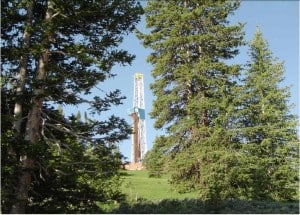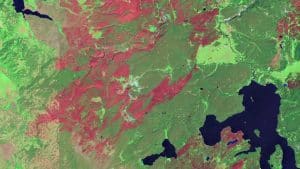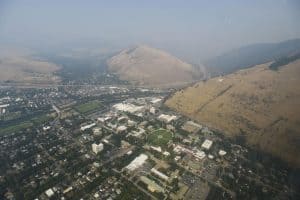Original post
(Sharon – did I miss a new rule about threads being closed to new comments? This one was started 8/13, and Steve replied 9/7, but I couldn’t today and it says “comments are closed” at the end.)
Steve posted this from AFRC:
Ninth Circuit Undercuts Collaborative Landscape Management
A Ninth Circuit ruling on August 13 strikes an unfortunate blow against collaborative landscape management. The court rejected the Lost Creek-Boulder Creek collaborative project, which is part of the Collaborative Forest Landscape Restoration Program (CFLRP). Most strikingly, the court’s analysis contains a fundamental misunderstanding of forest planning. It wrongly assumes that the project’s design is binding on future projects in the same area, though the project did not amend the governing forest plan. The irony is that the project focuses on restoration rather than timber production, and the court accepted the environmental groups’ challenge on that basis. The court’s decision is so flawed that the government has already taken the unusual step of filing a petition for rehearing.
In the Payette National Forest, fire suppression has led to accumulations of small and medium-sized trees, making wildfires harder to control and more damaging to the land and adjacent communities. A diverse group of private and not-for-profit interests came together and formed the Payette Forest Coalition (PFC). Despite different backgrounds, the group found a shared interest in reducing uncharacteristic wildfires, improving wildlife habitat, water quality and watershed health, enhancing recreational access, and supporting the economies of local communities. The PFC worked closely with the Forest Service to design the Lost Creek-Boulder Creek project, which aims to restore approximately 80,000 acres.
The project reflects a common understanding that doing nothing is not an option. Without prescribed burns and noncommercial thinning, at least 40,000 acres remain at risk of mortality from insect, disease and fire, 25 culverts will not be replaced (to the detriment of bull trout), and 55 MMBF of logs will not be manufactured into wood products while maintaining the approximately 1,100 associated jobs.
Environmental plaintiffs alleged that the Forest Service improperly failed to consult on bull trout critical habitat at the Forest Plan Level, improperly relied on a draft wildlife conservation strategy, improperly changed the desired condition for forested lands within the project area and failed to follow the proper procedures regarding the minimum road system in the project area. AFRC attorneys represented both the PFC and Adams County in the litigation.
The district court rejected all these challenges. In denying a request for injunctive relief, it found “the collaborative efforts of all Defendants in developing the Project is in the public’s interest,” and that “the public has an interest in supporting the collaborative process that was used in this case to develop the Project.”
The Ninth Circuit ignored all these factors, and its opinion does not mention the collaborative process at all. Instead, it assumes that the restoration emphasis of the project is a binding forest plan amendment and compares that to the existing forest plan, rather than analyzing whether the project is consistent with the forest plan. This upside-down ruling shows that litigation reform is a necessary element to any meaningful change on our forests.
The PFC has reiterated its commitment to restoration work despite the court setback. AFRC will continue to work with the PFC in its efforts to bring meaningful forest restoration to the Payette and appreciates the work of our partners on the Forest. /Lawson Fite
My response:
Not surprising. The “fundamental misunderstanding of forest planning” (NFMA) lies with the Forest Service.
“It (the court) wrongly assumes that the project’s design is binding on future projects in the same area… Instead, it assumes that the restoration emphasis of the project is a binding forest plan amendment and compares that to the existing forest plan.” The court didn’t “assume;” it took the Forest at its word that it had changed plan direction applicable to this project, and the court decided that as a matter of law, the changes that the Forest admitted it made can’t be made project-by-project. Even if the Forest hadn’t admitted it, desired conditions, by definition, apply to areas and timeframes larger than a project and require the forest planning process. The court understood that if the Forest Service could legally do what it did here, plan components wouldn’t matter, which is not what was intended by NFMA’s consistency requirement.
“its opinion does not mention the collaborative process at all.” Once the 9th Circuit decided that the agency action was illegal (unlike the district court), any “public interest” arguments became pretty much irrelevant. It’s kind of absurd to suggest that an illegal action should proceed just because there is “collaborative landscape management” (at least until the politicians make it so). See earlier discussion of this point from the district court TRO opinion here:



